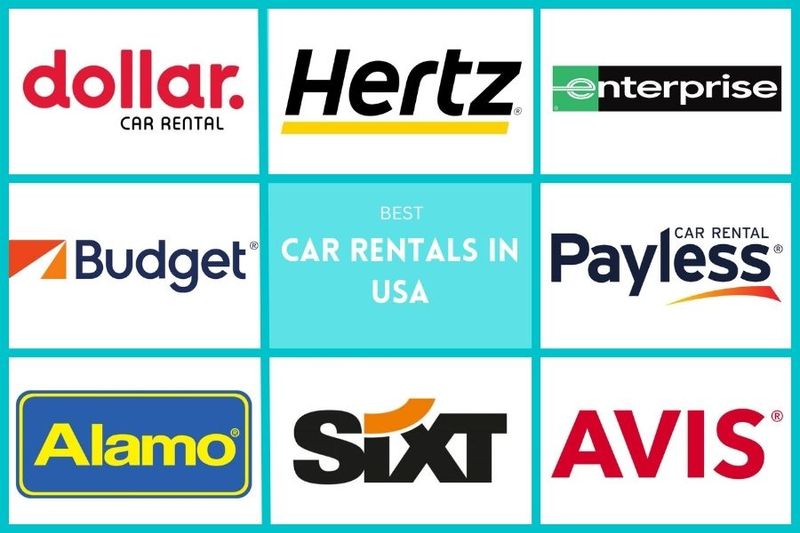Renting a car in the United States can be an essential part of your travel experience, offering freedom and flexibility to explore at your own pace. Whether you’re a visitor from abroad or a US resident planning a trip, understanding how to rent a car in the US is crucial for a smooth and enjoyable journey.
This guide will walk you through the process, from requirements and choosing the right vehicle to navigating insurance options and understanding rental agreements.
Skale Money Key Takeaways
- You must be at least 21 years old to rent a car in the US, with some companies requiring renters to be 25+
- A valid driver’s license, credit card, and insurance are typically required
- Compare different rental companies and car types to find the best deal
- Understand insurance options to ensure adequate coverage
- Familiarize yourself with pick-up and return procedures to avoid extra fees
- Be aware of US driving rules and regulations, which may vary by state
Table of Contents
Understanding Car Rental Requirements in the US
To rent a car in the US, you’ll need to meet certain requirements. These can vary slightly between rental companies, but generally include:
- A valid driver’s license
- Minimum age requirement (usually 21, sometimes 25)
- A credit card in the renter’s name
- Proof of insurance
US residents vs. international visitors:
| Requirement | US Residents | International Visitors |
| License | US license | Home country license + International Driving Permit |
| Age | 21+ (25+ for some car types) | 21+ (25+ for some car types) |
| Payment | Credit card | Credit card (some companies may require additional documentation) |
| Insurance | Personal auto insurance or rental insurance | Rental insurance typically required |
Tips:
- If you’re under 25, expect to pay a “young driver” fee
- International visitors should obtain an International Driving Permit before their trip
- Some companies may accept debit cards, but often with additional requirements
Choosing the Right Rental Car
Selecting the appropriate vehicle depends on your needs, budget, and the nature of your trip. Consider:
- Number of passengers
- Amount of luggage
- Terrain and weather conditions
- Fuel efficiency
- Personal comfort preferences
Car types comparison:
| Car Type | Suitable For | Pros | Cons |
| Economy | 1-2 people, city driving | Fuel-efficient, easy to park | Limited space, less comfort |
| Mid-size | 3-4 people, general use | Balance of space and efficiency | May be tight for long trips |
| SUV | 4-7 people, rough terrain | Spacious, good for diverse conditions | Lower fuel efficiency, harder to park |
| Luxury | 2-5 people, comfort-focused | High comfort, advanced features | More expensive, may require additional insurance |
Tips:
- Book early for better selection and rates
- Consider upgrading if you’ll be spending a lot of time in the car
- Check if the car has features you need (e.g., GPS, car seat anchors)
Navigating Rental Car Insurance Options
Understanding insurance options is crucial when learning how to rent a car in the US. Common types include:
- Collision Damage Waiver (CDW)
- Liability Protection
- Personal Accident Insurance
- Personal Effects Coverage
Insurance comparison:
| Insurance Type | Coverage | Typical Cost | Recommended For |
| CDW | Vehicle damage | $10-$30/day | Those without personal auto insurance |
| Liability | Damage to others | $10-$15/day | All renters |
| Personal Accident | Medical costs | $5-$10/day | Those without health insurance |
| Personal Effects | Stolen items | $2-$5/day | Those carrying valuables |
Tips:
- Check if your personal auto insurance or credit card offers rental coverage
- Consider purchasing a standalone policy from a third-party insurer for potential savings
- Always read the fine print to understand what’s covered and what’s not
Top 5 USA Rent-a-Car Companies
The US has several major car rental companies to choose from. Here are the top 5:
- Enterprise
- Hertz
- Avis
- Budget
- National
Comparison of top rental companies:
| Company | Avg. Daily Rate | Insurance Options | Headquarters | Contact | Website |
| Enterprise | $50-$100 | CDW, LIS, PAI, PEC | St. Louis, MO | 1-855-266-9289 | enterprise.com |
| Hertz | $60-$120 | LDW, LIS, PAI, PEC | Estero, FL | 1-800-654-3131 | hertz.com |
| Avis | $55-$110 | LDW, ALI, PAI, PEP | Parsippany, NJ | 1-800-633-3469 | avis.com |
| Budget | $45-$90 | LDW, SLI, PAI, PEP | Parsippany, NJ | 1-800-218-7992 | budget.com |
| National | $60-$115 | CDW, LIS, PAI, PEC | St. Louis, MO | 1-844-382-6875 | nationalcar.com |
Tips:
- Join loyalty programs for potential upgrades and faster pick-up
- Compare rates across multiple companies for the best deal
- Check for corporate discounts or memberships that may offer reduced rates
Booking Process and Best Practices
When you’re ready to book your rental car, follow these steps:
- Choose your pick-up and drop-off locations
- Select your dates and times
- Pick your car type
- Add any necessary extras (e.g., GPS, car seat)
- Select insurance options
- Review and confirm your reservation
Online vs. In-person booking:
| Aspect | Online Booking | In-Person Booking |
| Convenience | High | Low |
| Price comparison | Easy | Difficult |
| Availability of deals | More likely | Less likely |
| Flexibility for changes | Varies by company | High |
| Time required | Quick | Can be time-consuming |
Tips:
- Book in advance for better rates and car selection
- Use price comparison websites to find the best deals
- Look for promotional codes or coupons before booking
- Consider booking a package deal if you also need flights or hotels
Pick-up and Return Procedures
Understanding pick-up and return procedures is crucial when learning how to rent a car in the US. Here’s what to expect:
Pick-up steps:
- Locate the rental counter or kiosk
- Present your license, credit card, and reservation
- Review and sign the rental agreement
- Inspect the car for existing damage
- Familiarize yourself with the vehicle before leaving
Return steps:
- Refuel the car (if required)
- Park in the designated area
- Remove all personal belongings
- Complete the return process with an agent or kiosk
- Keep your final receipt
Common fees and charges:
| Fee Type | Typical Cost | How to Avoid |
| Late return | $10-$20/hour | Return on time or extend in advance |
| Refueling | $5-$10/gallon | Refuel before returning |
| Additional driver | $10-$15/day | Limit to one driver if possible |
| Airport surcharge | 10-20% of rental | Pick up off-airport if feasible |
Tips:
- Take photos of the car before and after your rental period
- Allow extra time for the pick-up process, especially at busy locations
- Understand the fuel policy and return the car with the agreed-upon fuel level
Understanding Rental Agreements and Policies
Photo by Scott Graham on Unsplash
Rental agreements can be complex, but it’s important to understand the key terms and conditions:
- Rental period and grace periods for returns
- Mileage limitations and overage charges
- Fuel policies
- Geographic restrictions
- Additional driver policies
Common restrictions and penalties:
| Restriction | Typical Penalty | Notes |
| Smoking | $250+ cleaning fee | Applies to all tobacco and vape products |
| Pets | $100+ cleaning fee | Service animals usually exempt |
| Off-road use | Varies, can void insurance | Check policy for details |
| International travel | Varies, often prohibited | May require special permission |
Tips:
- Always read the agreement carefully before signing
- Ask for clarification on any terms you don’t understand
- Keep a copy of the agreement with you during your rental period
Driving in the US: Rules and Regulations
When renting a car in the US, it’s crucial to understand and follow local driving laws:
- Drive on the right side of the road
- Wear seat belts at all times
- Obey posted speed limits
- No cell phone use while driving (in most states)
- Stop for school buses with flashing red lights
State-specific regulations:
| State | Unique Rule |
| California | No handheld cell phone use |
| New York | Move over for emergency vehicles |
| Florida | Headlights on when raining |
| Texas | Left lane for passing only on highways |
Tips:
- Familiarize yourself with local traffic signs and signals
- Be aware of right-turn-on-red rules (allowed unless posted otherwise)
- Download a GPS app or rent a GPS unit for navigation assistance
Handling Emergencies and Roadside Assistance
Being prepared for emergencies is an important part of knowing how to rent a car in the US:
- Mechanical issues
- Accidents
- Flat tires
- Running out of fuel
Emergency contacts:
| Situation | Who to Contact | Number |
| Life-threatening emergency | Emergency services | 911 |
| Car breakdown | Rental company roadside assistance | Provided on rental agreement |
| Minor accident | Local police non-emergency line | Varies by location |
| Flat tire/lockout | Rental company roadside assistance | Provided on rental agreement |
Tips:
- Save emergency numbers in your phone before your trip
- Know your rental car’s make, model, and license plate number
- Familiarize yourself with the car’s safety features and spare tire location
Money-Saving Strategies for Car Rentals
To make renting a car in the US more affordable to save money:
- Book early for better rates
- Compare prices across multiple companies
- Look for package deals with flights or hotels
- Join loyalty programs for discounts and upgrades
- Consider off-airport locations for lower rates
Loyalty program comparison:
| Program | Points Earning | Redemption Options | Notable Perks |
| Enterprise Plus | 1 point per $1 | Free rentals | Free upgrades |
| Hertz Gold Plus | 1 point per $1 | Free rentals, experiences | Skip the counter |
| Avis Preferred | 1 point per $1 | Free rentals, upgrades | Priority service |
Tips:
- Avoid unnecessary extras like GPS if you can use your smartphone
- Check for corporate, AAA, or other membership discounts
- Consider weekly rates for rentals longer than 5 days
Conclusion
Renting a car in the US can greatly enhance your travel experience, providing the freedom to explore at your own pace. By understanding the requirements, choosing the right vehicle, navigating insurance options, and following best practices for booking and driving, you can ensure a smooth and enjoyable rental experience. Remember to always read your rental agreement carefully, follow local driving laws, and be prepared for emergencies. With these tips and information in mind, you’re well-equipped to hit the open road and make the most of your US travels.
FAQ Section
What’s the minimum age to rent a car in the US?
Generally 21, but some companies require renters to be 25 for certain vehicle types.
Do I need an International Driving Permit?
If your license is not in English, an International Driving Permit is recommended and sometimes required.
Can I drive a rental car into Canada or Mexico?
Some companies allow this, but you’ll need to inform them in advance and may need additional insurance.
What should I do if I get in an accident with a rental car?
Ensure everyone’s safety, call the police, and contact your rental company immediately.
How can I get the best deal on a rental car?
Book early, compare prices across companies, look for discount codes, and consider joining loyalty programs.
Author: Cosmas Mwirigi
Cosmas Mwirigi is an established freelance writer with over five years of experience and the founder of Skalemoney.com. His content has been published by multiple publishers, including PV-Magazine, Slidebean, Bridge Global, Casinos.com, Gambling.com, and Reverbico. Mwirigi is an expert writer in iGaming, B2B, SaaS, Finance, digital marketing and Solar renewable energy. To contact him for his services, connect with him on his LinkedIn.
![]()




